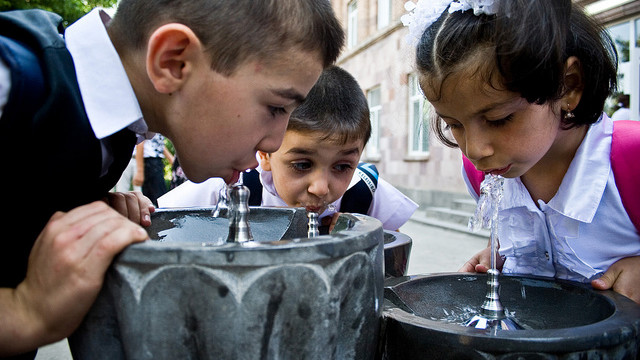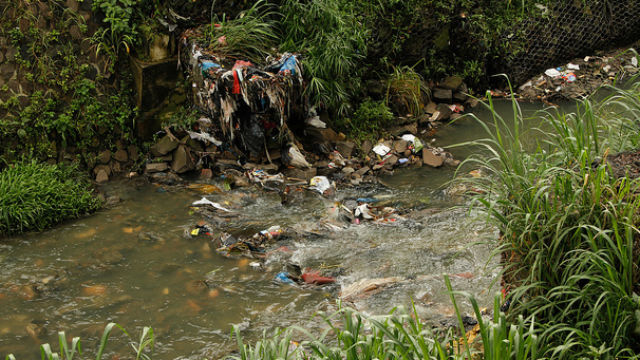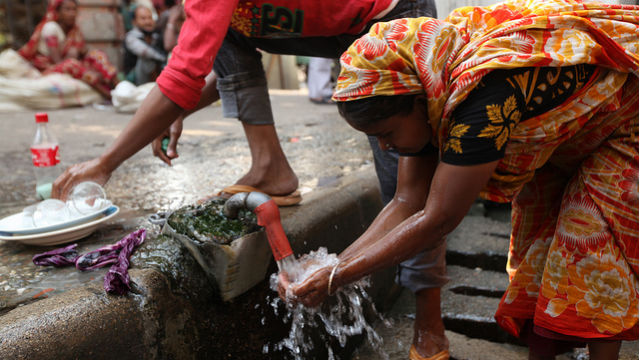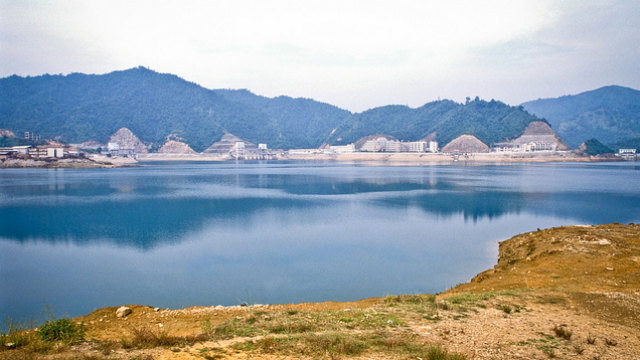SUMMARY
This is AI generated summarization, which may have errors. For context, always refer to the full article.
 In recent years the economic turmoil in the global markets and fiscal crises in numerous countries were reason for concern for the Asian economies.
In recent years the economic turmoil in the global markets and fiscal crises in numerous countries were reason for concern for the Asian economies.
While the Asia-Pacific economies seem to have weathered the economic storms roiling Europe and America, they might be approaching a significant crisis of their own if they cannot find ways to ensure the availability of adequate, good quality water to sustain the socio-economic achievements in the region.
Halving the number of people without access to improved water supply and access to improved sanitation are core targets of the Millennium Development Goals (MDGs).
And while substantial progress has been made in achieving the water supply objective ahead of the 2015 target, progress on the sanitation goal remains behind schedule and it is unlikely to be attained by 2015.
Water permeates every aspect of our lives. Drinking, cooking, washing and sanitation consume somewhere between 50 to 300 liters per day per person. But that’s just the tip of the iceberg.
We also depend on water for the electrical energy we consume while many of the industrial processes that power the economies of the region depend on adequate fresh water. Agriculture alone consumes enormous quantities of water to produce the food we eat — the more so when our diets include more meat.

If the region’s leaders do not respond quickly to the enormous threats that our water use poses to the economy and well-being of the region, then a Titanic-like tragedy may unfold on the population of Asia and the Pacific.
Water security
Water security means having reliable access to over 3,500 liters of water per day per person for direct and indirect consumption. It also means that water is properly managed in our cities and towns, with adequate protection from the impacts of floods and droughts. This also involves the sustainable management of rivers and wetlands.
Unfortunately, 80% of rivers in the region are in poor health. Large and growing numbers of the population are exposed to high levels of risk associated with floods and droughts. Water productivity is also poor in many countries.

It is now possible to measure the degree of water security of a country, based on which we can assess the impact of decisions and investments in the water sector.
The Asian Water Development Outlook 2013 (AWDO 2013), a report by the Asian Development Bank (ADB) and the Asia-Pacific Water Forum (APWF), indicates that 37 of the 49 countries in the region have sufficiently poor water security.
These countries have a national water security index of below 3 when assessed on a scale of one (hazardous) to 5 (model). No country in the region was found to have attained level-5 water security.
It is time for the region’s leaders to rise to the challenge of increasing water security for all as the basic foundation for sustained economic growth. Without well-directed investments, the sharply rising inequality in access to water and sanitation and the increasingly precarious state of rivers will become substantive threats to the region’s peace and prosperity.
AWDO 2013 shows that the economic advances of Asia and the Pacific are, or will be, in jeopardy in about 75% of countries due to poor water security – a poor enough statistic. More frighteningly, this means that about 93% of the region’s population lives in countries that must find ways to increase and accelerate investments in water security.

Eyes on Asia
Asia has become a major driving force in the global economy as well as home to about 3.9 billion people, or 60% of the world’s population. Sustaining the lives, livelihoods and environment that the people of Asia and the Pacific depend on will require water management strategies that transcend current boundaries between responsible agencies and, where necessary, national and international administrative boundaries.
It is now imperative that water agencies and neighboring administrations make strategic decisions about how water will be used and urgently increase investments to implement those decisions.
This may well involve substantive changes in agriculture, energy and industrial policies to bring water use within the available resources. It will involve investments in institutions, infrastructure, information, education and communication over a number of years. It will also involve partnerships between the government, the private sector and civil society.
Ultimately, it is likely to involve trade-offs between short-term economic gains and sustainable long-term socio-economic development.
Both India and the People’s Republic of China are driving changes in the water sector, with leadership by planning and finance departments, by demanding that water sector agencies take a more strategic view of the problem than their own traditionally narrow perspective.
Whether they will be able to find the synergies between sectors remains to be seen, but if the agencies are working towards a common plan, it should be possible to increase water security significantly.

To advance an overdue paradigm shift in leadership for water security, the Prime Minister of Thailand has invited heads of state and government from 49 countries in the region to the 2nd Asia-Pacific Water Summit in Chiang Mai on May 19-20.
ADB recommends that finance and planning agencies must give stronger leadership in water security decisions and investments as a strategic imperative to sustain economic growth. It is these agencies that are best placed to pull policy levers that will increase water security when applied with appropriate investments in the water sector.
The choices made about water in the next few years will be the major determinant of whether the children of Asia and the Pacific will be able to enjoy the future they want in 2050. – Rappler.com
March 22 was World Water Day.
Ian W. Makin is Principal Water Resources Specialist in ADB’s Regional and Sustainable Development Department (RSDD) where he coordinates implementation of the ADB water operational plan, focusing on water resources and agricultural water management to support ADB operations. Prior to joining ADB, he was Regional Director at the International Water Management Institute (IWMI) leading research and capacity building initiatives in South East and South Asia.
Add a comment
How does this make you feel?
There are no comments yet. Add your comment to start the conversation.